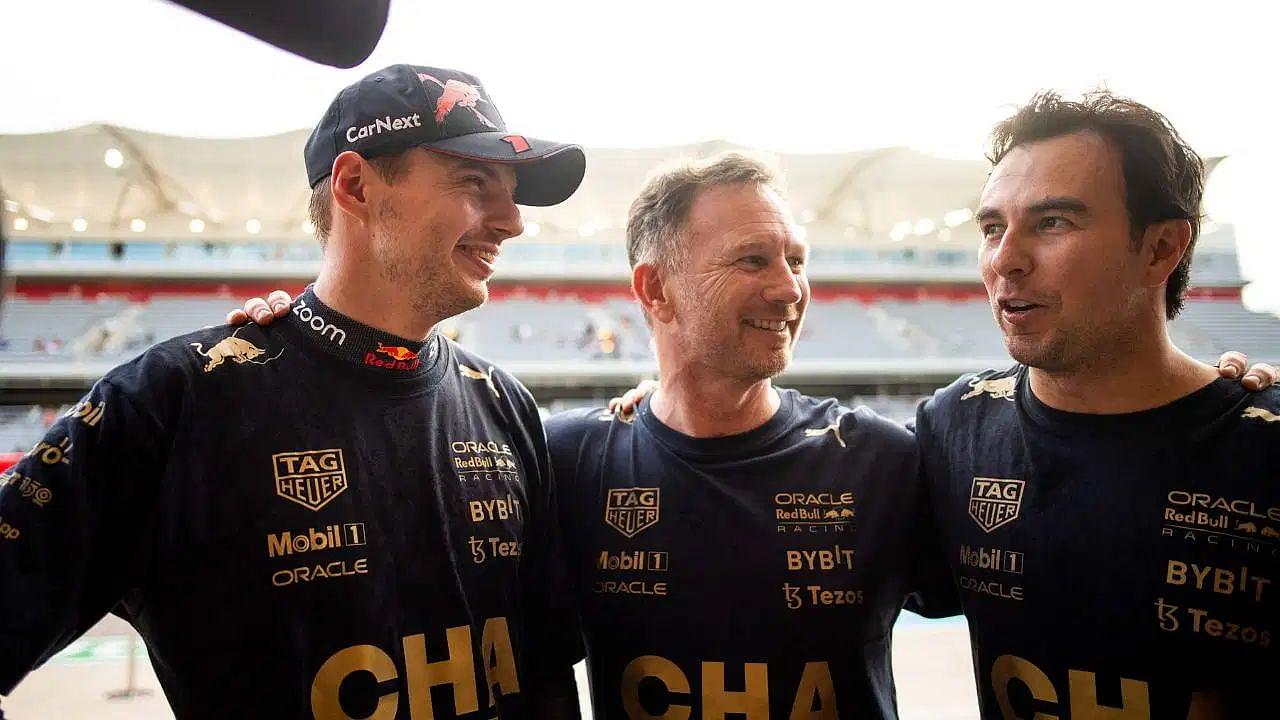Over the past five years, Red Bull has transformed from being determined chasers in the pack to three-time reigning constructor champions in F1. However, their impressive rise after dethroning Mercedes wasn’t an overnight success. Christian Horner and his team have endured many sleepless nights contemplating how to overcome the intense competition in Formula 1.
The journey of competitiveness for Red Bull began in 1987 when Dietrich Mateschitz founded the company. He identified extreme sports and event promotion as crucial elements for marketing the newly introduced energy drink.
In 1995, Red Bull entered the world of Formula 1 as a sponsor for the Sauber team. However, it wasn’t until 2005 that Red Bull introduced themselves as an independent team. This suggests that the Milton Keynes-based team is still relatively new to the motorsports industry.
When did Red Bull start racing and who was its first driver?
Red Bull Racing was established in late 2004 when the team owner, Mateschitz, acquired the underperforming Jaguar Racing. Since then, the team has positioned itself as a maverick force, exhibiting a bold and aggressive approach both on and off the track. In its inaugural appearance at the 2005 Australian Grand Prix, the team secured a double-point finish.
The roster included drivers such as David Coulthard, signed as the first driver, and Christian Klien and Vitantonio Liuzzi, alternated as second drivers. Subsequently, the team achieved points finishes in the first five races of the season. By the year-end, Coulthard had amassed 24 points, contributing to the team’s P7 finish in the standings.
When did Red Bull win its first pole and its first race?
Continuing their strong performance into the next year, the team once again concluded the season with a seventh-place finish. Nonetheless, this particular year proved to be impressive for the team. It is because David Coulthard achieved Red Bull’s inaugural podium finish, steering the RB2 to a third-place finish in the Monaco Grand Prix.
On this day in 2006, Christian Horner jumped into the pool wearing nothing but a Superman cape to celebrate David Coulthard scoring a podium in Monaco.
Red Bull have done so regularly since then, but thankfully, he has decided to stay fully clothed for each of them. #f1 pic.twitter.com/I3TG2X5kzO
— PlanetF1 (@Planet_F1) May 28, 2021
Following that, in 2007, Mark Webber joined the team and achieved his first podium at the European Grand Prix. Despite his noteworthy efforts, the team couldn’t secure its inaugural victory. It seemed that this significant triumph was destined for the exceptional German driver, Sebastian Vettel.
Red Bull took advantage of the opportunity to showcase their RB5 when new regulations were introduced in 2009. At the 2009 Chinese Grand Prix, Vettel secured the team’s first victory. Notably, the team achieved a 1-2 finish in that race, with Webber claiming the second position.
Throughout that year, both drivers delivered memorable performances, securing five more victories, including Webber’s debut F1 win at Nurburgring. These achievements helped the squad place second in the constructors’ championship. It was a premise, to what was going to be one of the most dominant eras in F1 history.
When did Red Bull win its first championship?
In 2010, Red Bull Racing realized the aspirations set five years prior with the formidable RB6. Mark Webber and Sebastian Vettel demonstrated exceptional prowess on the Formula 1 circuits throughout the season.
Right from the start, the duo consistently contended for podium finishes. Consequently, the team secured its maiden constructor’s championship at the penultimate round in Brazil.
Following this success, both drivers headed to Abu Dhabi with their sights set on the driver’s crown. Ultimately, Sebastian Vettel emerged victorious by winning the race and becoming the youngest world champion in the sport’s history. The 2010 season marked the start of an amazing four-year spell during which Red Bull and Vettel won four consecutive titles.
Following his massive success, Vettel’s reputation did wonders for the Red Bull junior academy. It went on to be one of the most prestigious young programs in F1, and they produce world-class talents even today.
What is Red Bull’s young driver program?
Before Red Bull entered Formula 1 with their own teams, Helmut Marko was already scouting for young talent. He played a role in developing stars like Austrian drivers Gerhard Berger and Karl Wendlinger for several years before establishing his racing team, RSM Marko, in the late 1980s.
Initially competing in F3 and Formula 3000 (now F2), the organization underwent a name change to Red Bull Junior Team in 1999. By 2001, it evolved into the Red Bull Young Driver Program. Since then, Marko has been leading the program while also holding a broader role within both the Red Bull teams.
He has unofficially represented both Red Bull and its sister team, and his views are respected, especially when it comes to hiring and firing. However, while considering the array of talent fostered under Marko’s guidance, there is an extensive list.
Sebastian Vettel, Daniel Ricciardo, Max Verstappen, Pierre Gasly, and Carlos Sainz stand out as five exceptional drivers who have risen to prominence in F1 under the 80-year-old’s guidance. Remarkably, Vettel and Verstappen have secured multiple world championships (seven among them).
The academy is dedicated to nurturing and advancing young talents. However, Marko has the power to take the necessary steps if he notices that a driver’s progress has slowed or paced. Throughout the program’s 22-year existence, 97 drivers have gone through its ranks with eight of them have been selected for the main Red Bull squad.
Why did Red Bull pick Christian Horner to lead their squad?
Christian Horner is undoubtedly the one person who has been the team’s unifying factor since Red Bull got established. In addition to his experience as a motorsport driver, Horner is a strategic genius. Indeed, his accomplishments in managing teams at junior levels caught the attention of Mateschitz in 2004.
Following this, Mateschitz named Horner Red Bull’s team boss, making him the youngest team principal of all time. Since then, Horner has led the team through various challenges and triumphs. The Briton has witnessed the highs of Vettel and Verstappen’s success and has also navigated through the challenges posed by Mercedes’ dominance.
Throughout every era, Horner’s unwavering dedication to guiding the team to the pinnacle has remained a constant. Thanks to his guidance, the team joined forces with Honda in 2019, initiating a journey back to prominence. This collaboration resulted in three victories and nine podium finishes for the team under his leadership.
The team continued its strong performance in 2020. However, it was in 2021 that Horner and his team launched a formidable challenge against Mercedes. After a fierce season-long struggle, the Austrian team put an end to their dominance, at least in the driver’s championship.
Red Bull’s current era of dominance
Currently, Red Bull is the most dominant team of all time. The signs were always there, during Mercedes’ turbo-hybrid dominance, but the team sprung to life in 2021 when Verstappen dethroned Hamilton to win his first title. He followed it with wins in 2022 and 2023, as Red Bull comfortably bagged both constructors’ titles too.
Undoubtedly, the blend of Red Bull’s formidable lineup is the primary factor behind their sustained dominance. From the design brilliance of Adrian Newey to the managerial prowess of Marko. From the driving skills of Sergio Perez to Max Verstappen, each individual has contributed to making Christian Horner’s side a team that will be remembered for years to come.








